Chila Burman unveils neon dreamland at Covent Garden market
Chila Burman emblazons London’s Covent Garden market building with a neon light spectacle. Here, the artist explains the story behind the new installation, an ode to identity, hope and magic
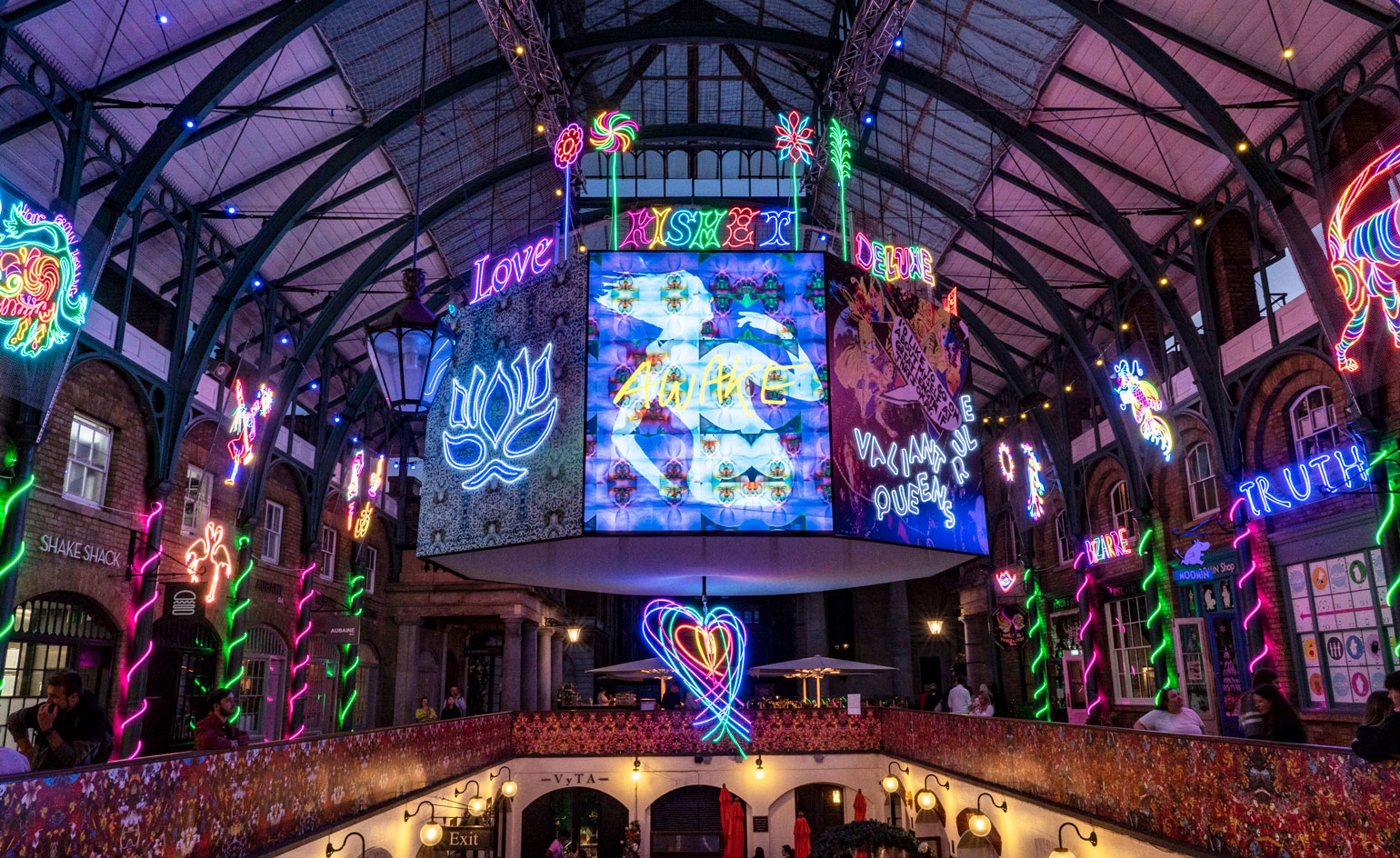
Those passing through London’s Covent Garden are about to see the iconic market building in an entirely new light. In the same spirit as her monumental outdoor takeover of Tate Britain’s facade in 2020, British artist Chila Burman’s bold new multi-part installation, Do you see words in rainbows celebrates love and identity in the modern world, while drawing on the area’s rich history.
Burman’s is the latest in Covent Garden’s series of large-scale commissions, which has featured work by the likes of Damien Hirst, Jeff Koons and Anya Hindmarch.
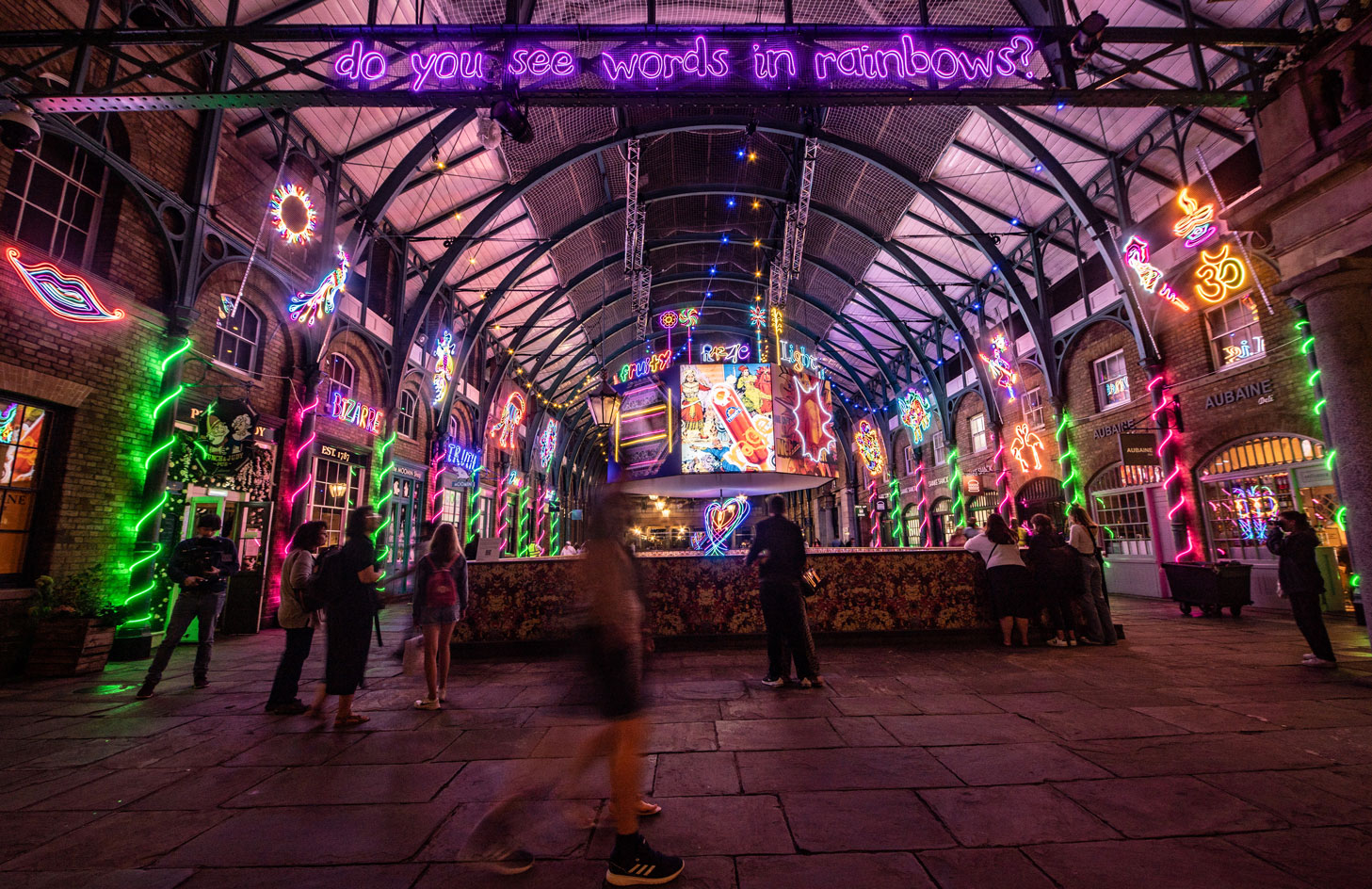
As well as lifting moods with vast light sculptures, bold colours and optimistic messages, the installation will also offer tangible support to the LGBTQI+ community, following the recent cancellation of Pride London 2021 due to Covid-19. For every Instagram post (and there are bound to be many) snapped underneath the neon wonderland, Covent Garden will donate £1 to the Albert Kennedy Trust, a youth homelessness charity.
For those unable to visit the commission physically, the installation will be available via an interactive portal on the Covent Garden website, through the 3D platform Matterport. We speak to Chila Burman about the inspiration behind her kaleidoscopic new project.

Wallpaper*: What appealed to you about the idea of creating a piece for Covent Garden’s historic Market Building?
Chila Burman: Initially it was my connection to Covent Garden that appealed. Since moving to London in the 1980s I’ve been drawn to the area; I attended the Slade nearby, would swim every morning at the Oasis Sports Centre, and have always loved its vibe. From the entertainers on the streets to the fantastic shops and restaurants, Covent Garden has always retained a sense of magic for me. And it was this idea of magic that I wanted to capture in my piece. I want to bring joy and wonder to the public in much the same way, particularly as our lives remain impacted by covid.
W*: What inspired the themes and motifs in the installation?
CB: Like in much of my practice, key sources of inspiration in this installation include identity, memory, feminist perspectives, mythology and my Hindu Punjabi heritage.
I’ve used bright colours throughout the installation in honour of the images and messages I associate with life memories from my childhood. I specifically wanted to honour the magic of entertainment and was particularly inspired by my parents, who were both entertainers. My dad, a magician in India, would entertain his colleagues, friends and family in our house at parties. My mum would entertain everybody at our temple and at weddings. I felt honouring them, and their love of entertaining through this bright, engaging installation and all its elements made a perfect link with Covent Garden’s rich history of street performers and magicians.
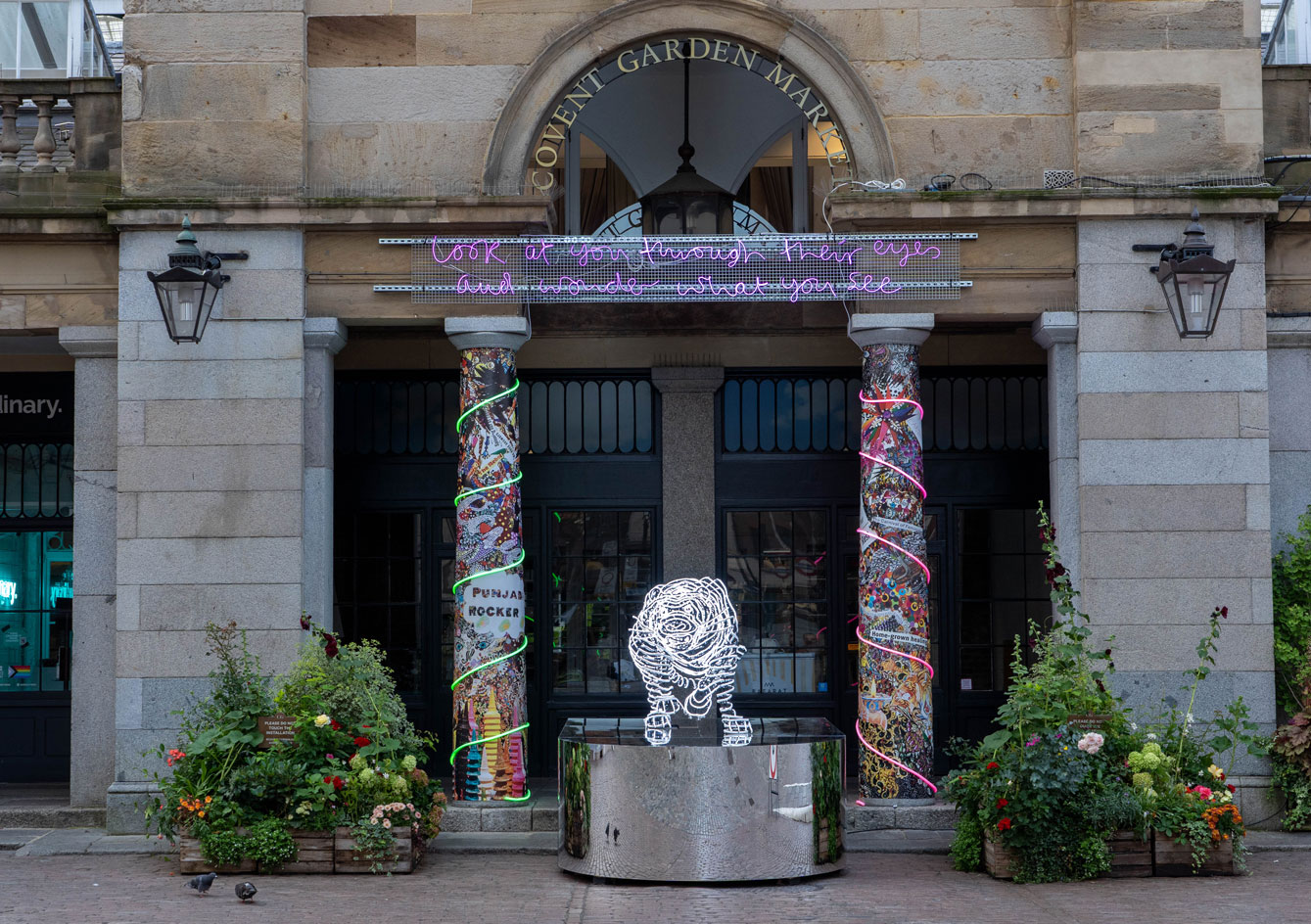
Inspiration from my Hindu Punjabi heritage also takes the form of illuminating neon sculptures, some of which will be reused from my Tate [Britain] winter commission to help reduce the environmental impact. You’ll see familiar pieces along with new ones I’ve been working hard on, and of course, the tiger motif which I’ve used widely throughout my practice.
The shape of the suspended octagon at the centre was chosen because of its symbolism in different cultures. It has been used throughout history to represent rebirth, regeneration, transition and direction. From the Eightfold Path to enlightenment, to the points of a compass, I felt this shape would remind us to think about where we are going, the next steps in our new post-pandemic normal, and how to live to the best of our abilities.

W*: What was the most enjoyable part of the creative process, and the most challenging?
CB: The most enjoyable part is always figuring out how I can make my installation the most representative of my practice. Ensuring that it communicates an uplifting message is important, but I also want to highlight the significant role that my heritage and the contributions of Black and Asian British artists have made to this country. More now than ever we need reminders of the value diversity brings to our world and the strength in uniting together to overcome some of the inequalities that impact so many.
W*: What message do you hope those who experience the work will take away from it?
CB: This installation is a celebration of my Hindu Punjabi culture, it is bright, exuberant, colourful and kaleidoscopic. I have designed it to bring joy, positivity and a sense of magic to the public. It will be a real experience for anyone who comes to see it, whether that’s in person or virtually, I hope people will feel uplifted and inspired.
Receive our daily digest of inspiration, escapism and design stories from around the world direct to your inbox.
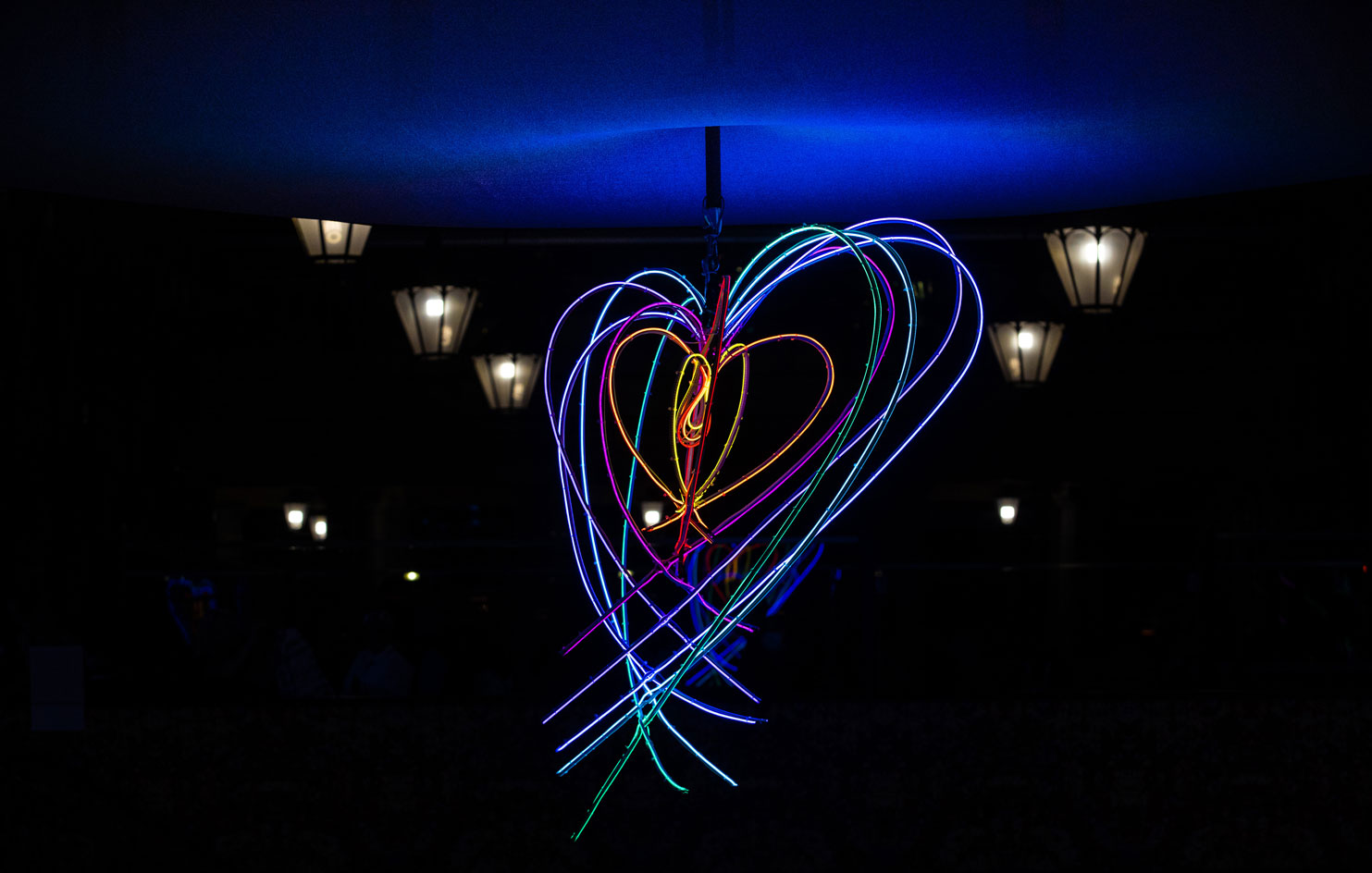
INFORMATION
Chila Burman’s installation at Covent Garden market will be on view until October 2021. coventgarden.london
Harriet Lloyd-Smith was the Arts Editor of Wallpaper*, responsible for the art pages across digital and print, including profiles, exhibition reviews, and contemporary art collaborations. She started at Wallpaper* in 2017 and has written for leading contemporary art publications, auction houses and arts charities, and lectured on review writing and art journalism. When she’s not writing about art, she’s making her own.
-
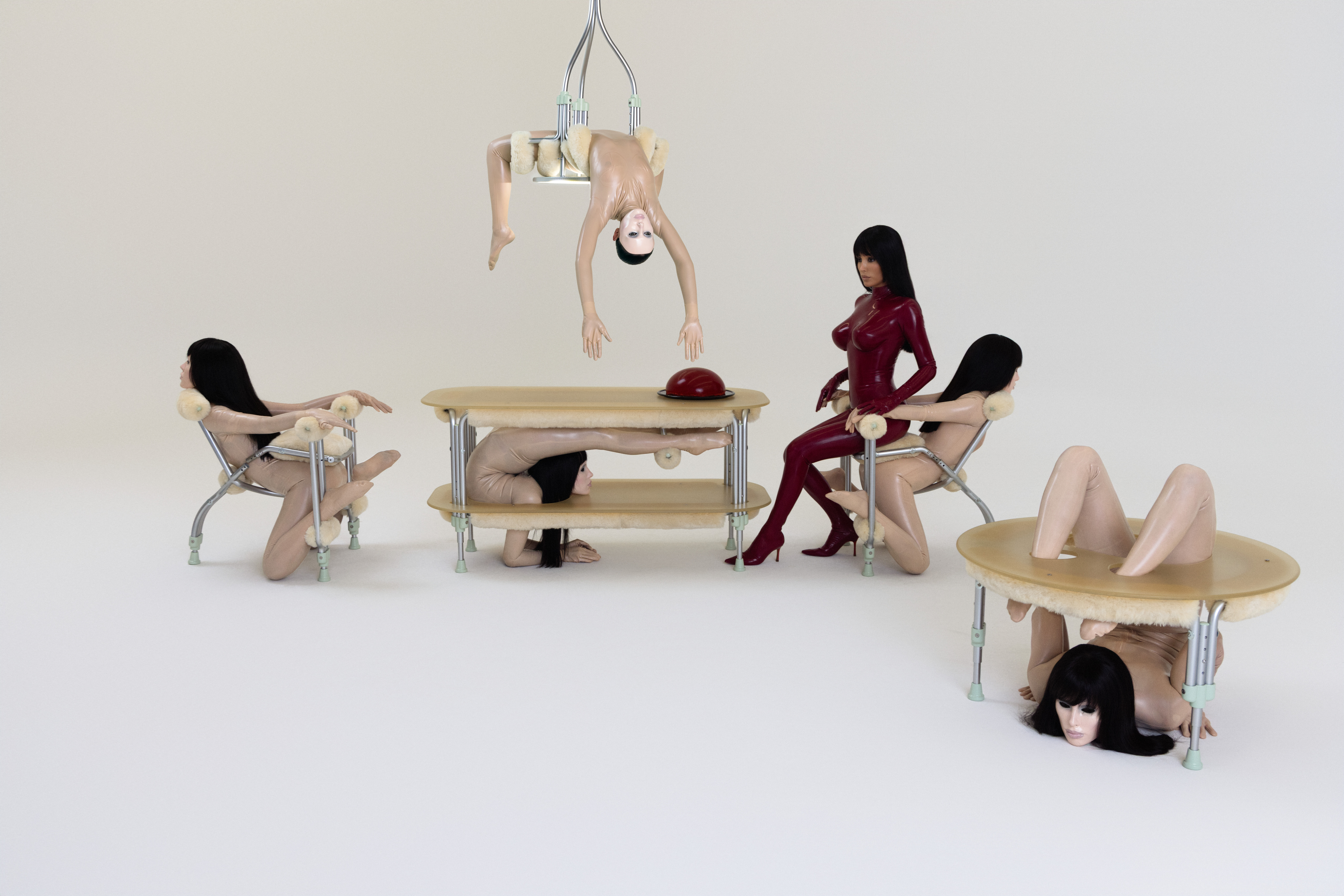 Eight questions for Bianca Censori, as she unveils her debut performance
Eight questions for Bianca Censori, as she unveils her debut performanceBianca Censori has presented her first exhibition and performance, BIO POP, in Seoul, South Korea
-
 How to elevate a rental with minimal interventions? Charu Gandhi has nailed it with her London home
How to elevate a rental with minimal interventions? Charu Gandhi has nailed it with her London homeFocus on key spaces, work with inherited details, and go big on colour and texture, says Gandhi, an interior designer set on beautifying her tired rental
-
 These fashion books, all released in 2025, are the perfect gift for style fans
These fashion books, all released in 2025, are the perfect gift for style fansChosen by the Wallpaper* style editors to inspire, intrigue and delight, these visually enticing tomes for your fashion library span from lush surveys on Loewe and Louis Vuitton to the rebellious style of Rick Owens and Jean Paul Gaultier
-
 Riccardo Dalisi’s first UK retrospective opens at east London gallery Spazio Leone
Riccardo Dalisi’s first UK retrospective opens at east London gallery Spazio LeoneSpazio Leone draws together six decades of the Italian visionary’s work, from whimsical coffee pots to radical community workshops
-
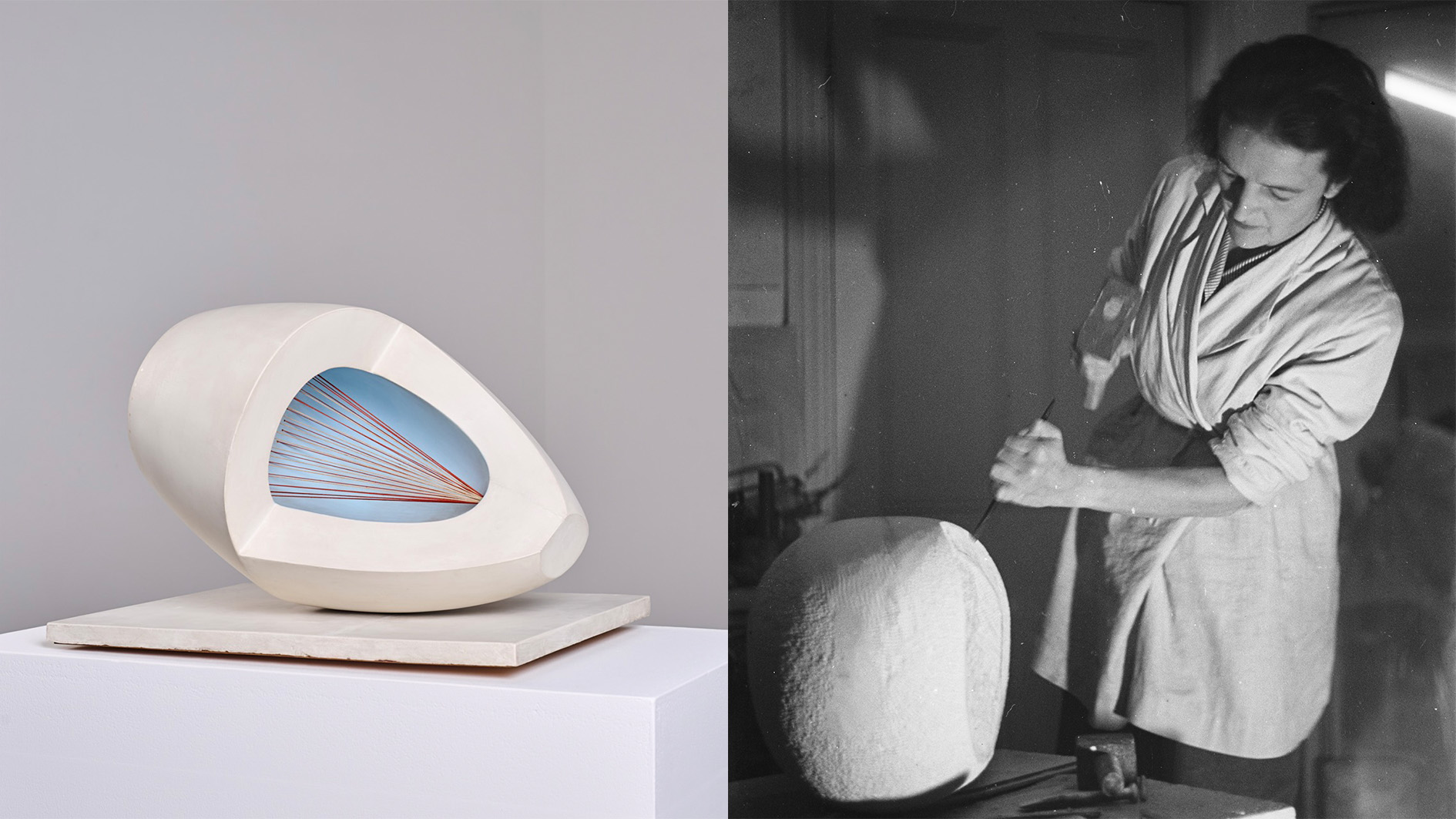 Inside the fight to keep an iconic Barbara Hepworth sculpture in the UK
Inside the fight to keep an iconic Barbara Hepworth sculpture in the UK‘Sculpture with Colour’ captures a pivotal moment in Hepworth’s career. When it was sold to an overseas buyer, UK institutions launched a campaign to keep it in the country
-
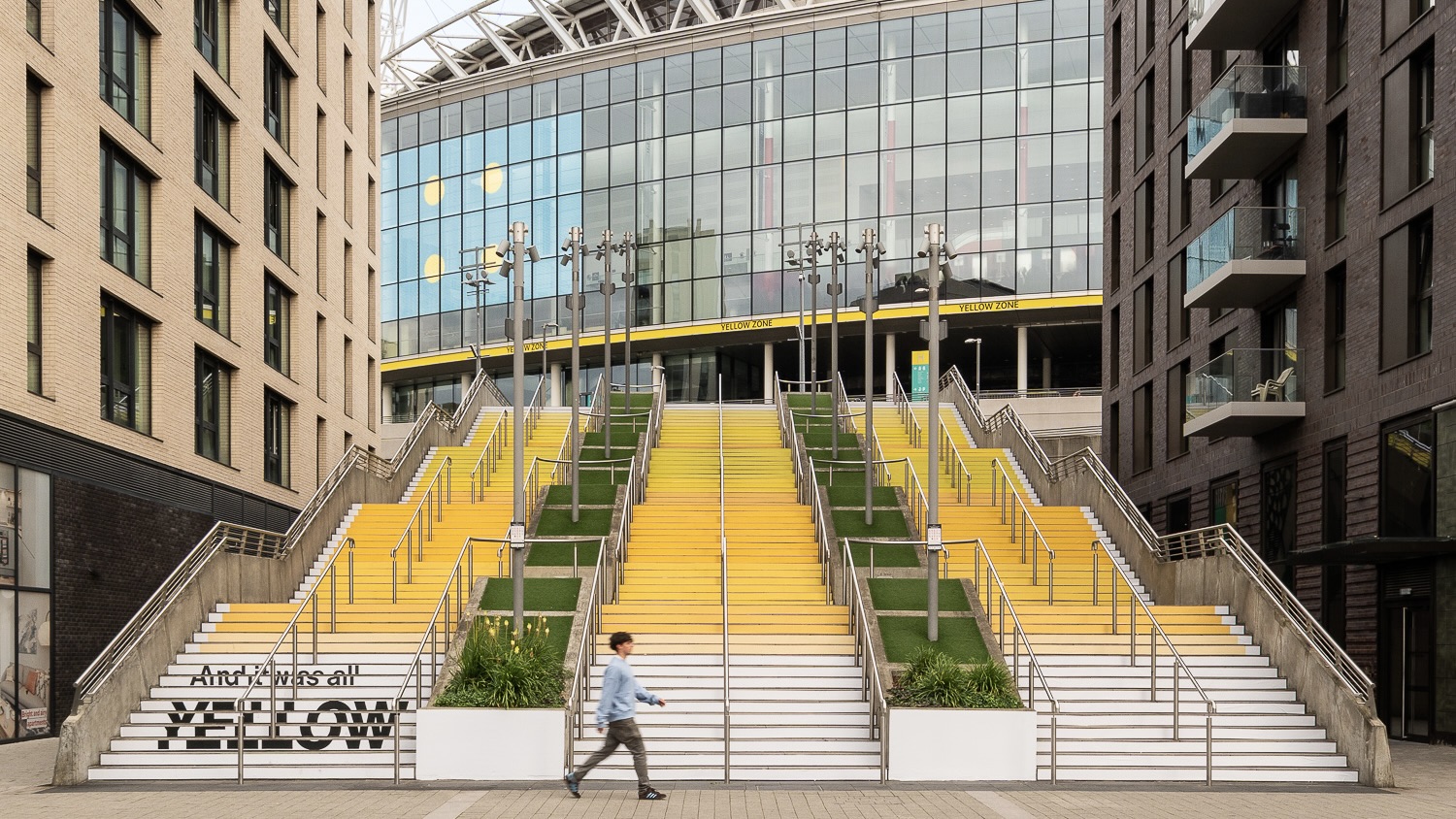 Pantone’s new public art installation is a tribute to Coldplay’s ‘Yellow’, 25 years after its release
Pantone’s new public art installation is a tribute to Coldplay’s ‘Yellow’, 25 years after its releaseThe colour company has created a – you guessed it – yellow colour swatch on some steps in Wembley Park, London, where the band will play ten shows this month
-
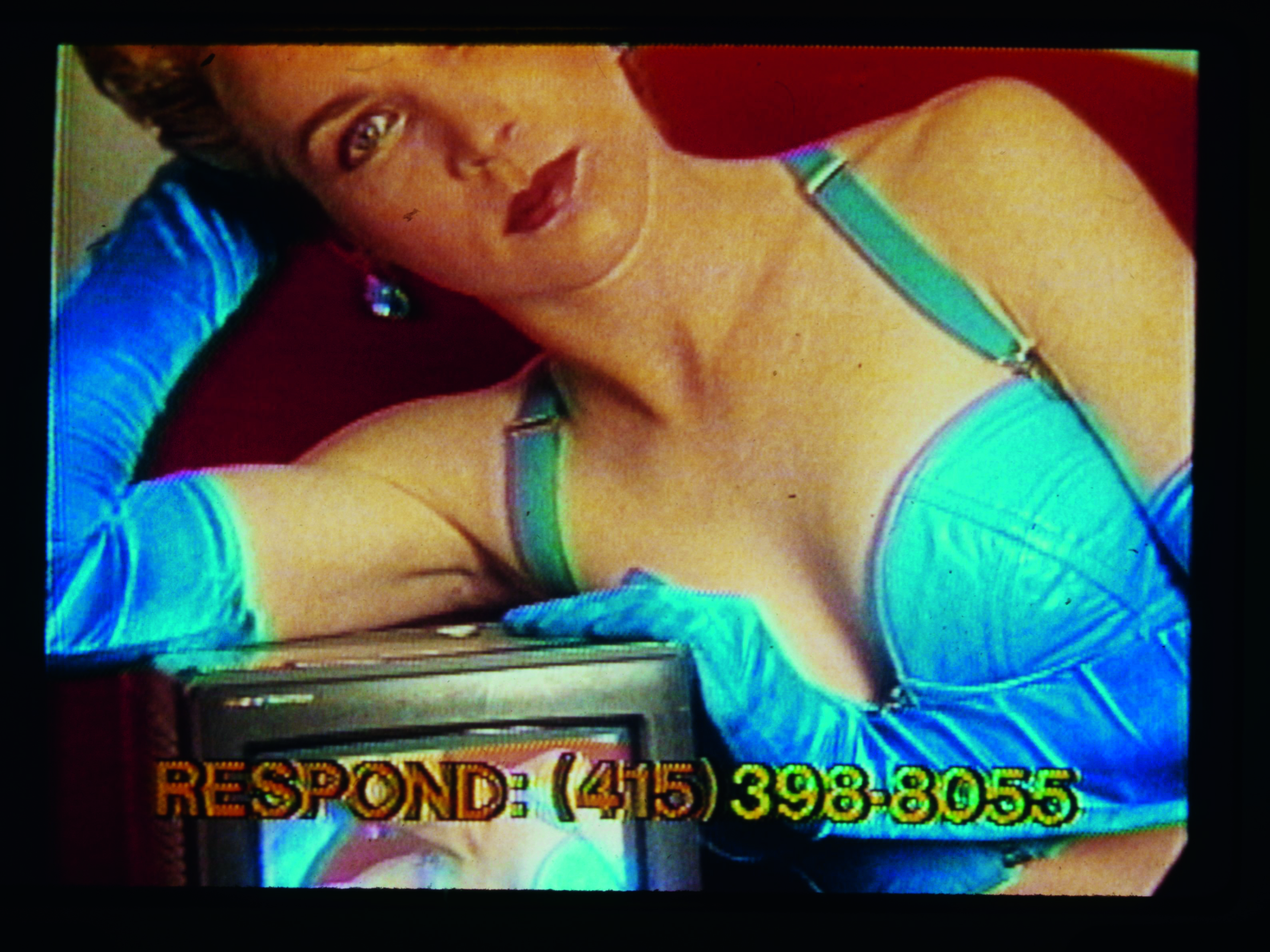 Thirty-five years after its creation, Lynn Hershman Leeson’s seminal video is as poignant as ever
Thirty-five years after its creation, Lynn Hershman Leeson’s seminal video is as poignant as everLynn Hershman Leeson’s 'Desire Inc', at 243 Luz in Margate, blurs the boundaries between art and reality
-
 Out of office: the Wallpaper* editors’ picks of the week
Out of office: the Wallpaper* editors’ picks of the weekSummer holidays are here, with Wallpaper* editors jetting off to some exceptional destinations, including highly recommended Mérida in Mexico. Then it’s back to work, or, for one editor, back to school…
-
 A bespoke 40m mixed-media dragon is the centrepiece of Glastonbury’s new chill-out area
A bespoke 40m mixed-media dragon is the centrepiece of Glastonbury’s new chill-out areaNew for 2025 is Dragon's Tail – a space to offer some calm within Glastonbury’s late-night area with artwork by Edgar Phillips at its heart
-
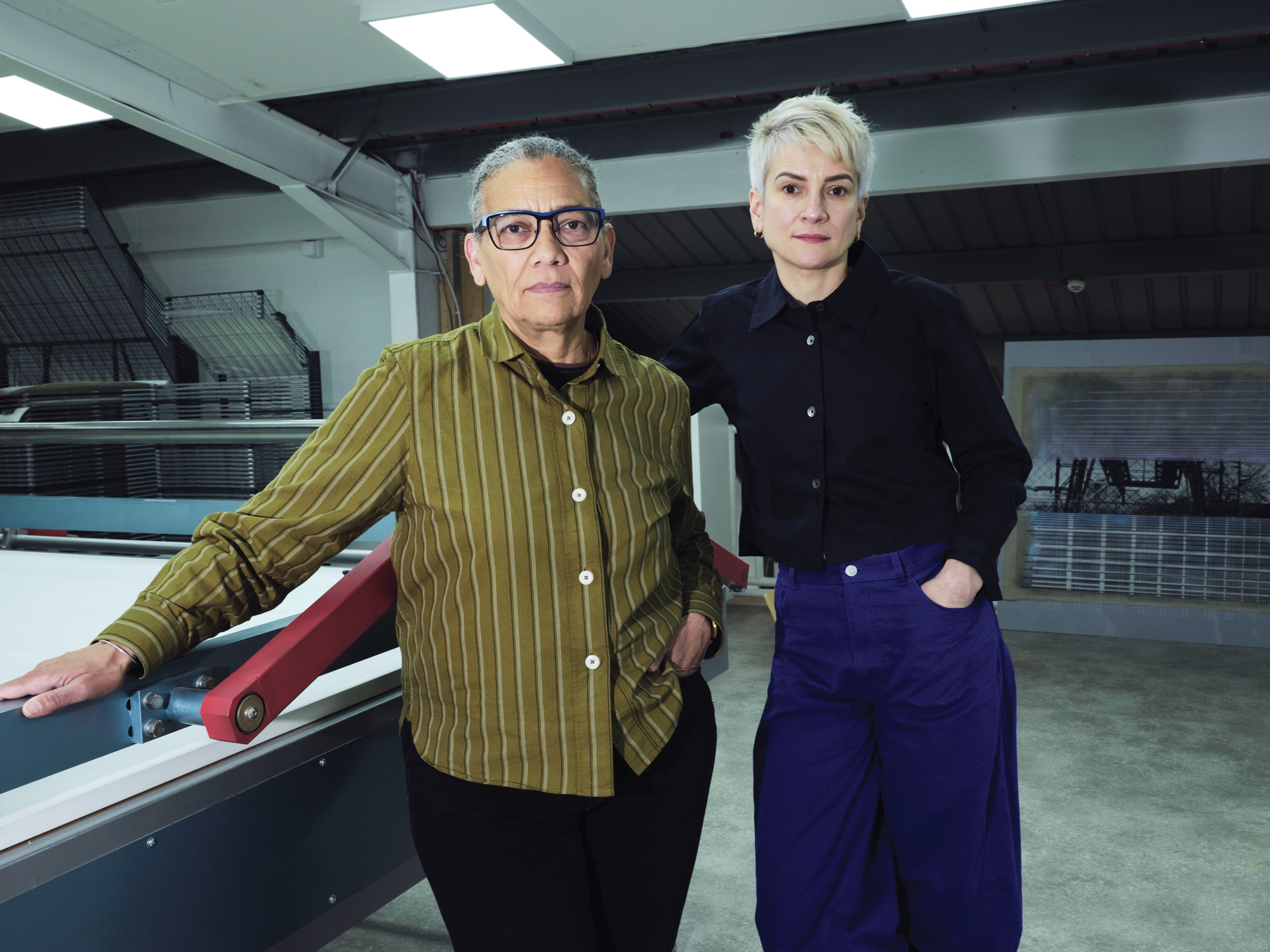 Lubaina Himid and Magda Stawarska’s new show at Kettle’s Yard will uncover the missing narratives in everyday life stories
Lubaina Himid and Magda Stawarska’s new show at Kettle’s Yard will uncover the missing narratives in everyday life storiesThe artists and partners in life are collaborating on an immersive takeover of Kettle’s Yard, Cambridge, in an exhibition that delves into a lost literary legacy
-
 San Francisco’s controversial monument, the Vaillancourt Fountain, could be facing demolition
San Francisco’s controversial monument, the Vaillancourt Fountain, could be facing demolitionThe brutalist fountain is conspicuously absent from renders showing a redeveloped Embarcadero Plaza and people are unhappy about it, including the structure’s 95-year-old designer